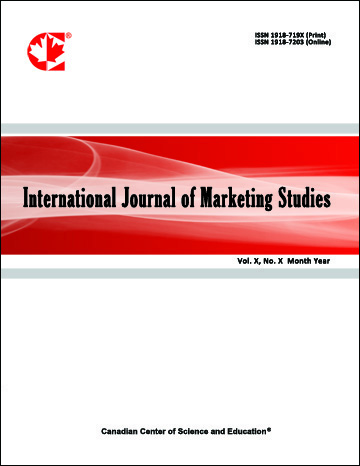The Saliency of Second Level Agenda-setting Theory Effects on the Corporate Reputation of Business Organizations in Nigeria
- Olusanmi Amujo
- Olutayo Otubanjo
Abstract
Purpose: This paper examines how business news reports on the activities of business organizations in Nigeria set agenda for the opinions, attitudes and perceptions of their stakeholders.
Design/method/approach: Content analysis of business newspapers and semi-structured interviews were employed to test the validity of four theoretical propositions on the second level agenda-setting effects.
Findings: Our findings confirm existing theories that the amount of news coverage received by a corporation connects positively to public awareness and perception of the corporation; that the amount of news coverage dedicated to specific attributes of some business organizations in Nigeria connects to the proportion of the stakeholders who define the corporation by these attributes; that the more media cover specific corporate attributes from a positive perspective, the more positively will the general public perceive these attributes; and that the more negative that the media coverage is for some specific corporate attributes, the more negative will the general public perceive those attributes.
Theoretical implication: One can reasonably argue that based on the outcomes of this study, corporate reputation theories as propounded in international marketing studies bear significant corollary to reputation studies in Nigeria.
Practical implication: The study suggests the need for reputation managers in Nigeria and in the western world to learn from one another by forming strategic alliances.
Limitation of study: This study is devoted to the Nigerian business environment. Whilst this may prevent the generation of a theory, it offers an opportunity to examine the subject on comparative national study.
- Full Text:
 PDF
PDF
- DOI:10.5539/ijms.v4n5p29
Journal Metrics
Google-based Impact Factor (2021): 1.34
h-index (July 2022): 70
i10-index (July 2022): 373
Index
- Academic Journals Database
- CNKI Scholar
- EconBiz
- Electronic Journals Library
- Excellence in Research for Australia (ERA)
- GETIT@YALE (Yale University Library)
- Harvard Library
- IBZ Online
- Infotrieve
- JournalTOCs
- LOCKSS
- MIAR
- PKP Open Archives Harvester
- RePEc
- ResearchGate
- ROAD
- Scilit
- SHERPA/RoMEO
- Stanford Libraries
- UCR Library
Contact
- Alyssa SunEditorial Assistant
- ijms@ccsenet.org
